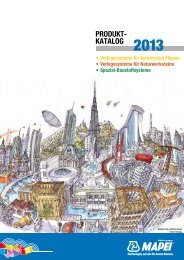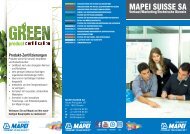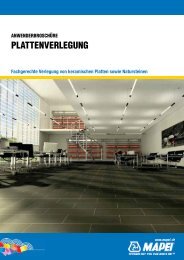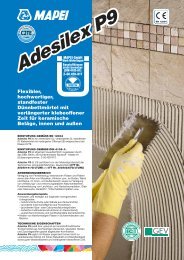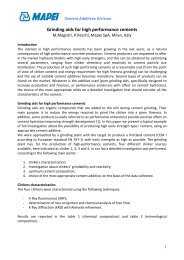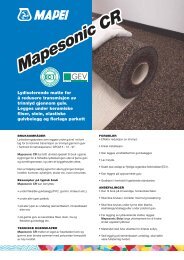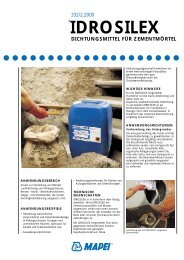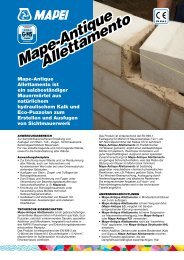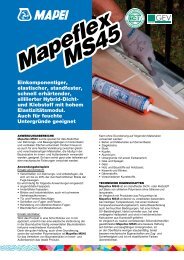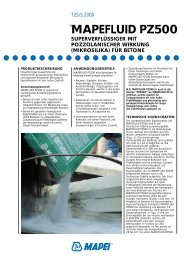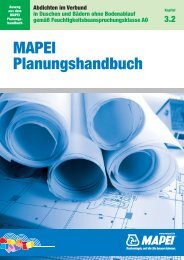WATERPROOFING TERRACES AND BALCONIES - Mapei
WATERPROOFING TERRACES AND BALCONIES - Mapei
WATERPROOFING TERRACES AND BALCONIES - Mapei
You also want an ePaper? Increase the reach of your titles
YUMPU automatically turns print PDFs into web optimized ePapers that Google loves.
Fig. 5.13 - Boundary around the zone where ADESILEX<br />
PG4 is to be applied<br />
Fig. 5.14 - Applying the first layer of ADESILEX PG4<br />
Fig. 5.15 - Applying MAPEB<strong>AND</strong> TPE on fresh<br />
ADESILEX PG4<br />
• Lay on the upside-down “Ω” shaped MAPEB<strong>AND</strong> TPE so that only<br />
the polyester felt bonds to the ADESILEx PG4. Press down along the<br />
sides, making sure there are no creases or air bubbles (Fig. 5.15).<br />
• Apply a second layer of ADESILEx PG4 fresh on fresh, and<br />
completely cover the sides of the tape with the second coat (Fig. 5.16).<br />
• Smooth over the surface with a flat trowel and, while the product<br />
is still fresh, sprinkle on a layer of 0.5 spheroid quartz (Fig. 5.17) to<br />
create a substrate which is rough enough to form a good bond with the<br />
waterproofing product.<br />
• Once the curing process of the ADESILEx PG4 has been completed,<br />
remove any loose quartz (Fig. 5.18).<br />
The joints between the strips of MAPEB<strong>AND</strong> TPE may be made with a hot-<br />
air welding gun or by cold welding by overlapping the TPE part by at least<br />
5 cm and bonding them together with a double-buttering polychloroprenic<br />
contact adhesive in solvent such as ADESILEx LP. We recommend laying<br />
the MAPEB<strong>AND</strong> TPE inside the joint to form an upside-down “Ω” shape.<br />
After waterproofing and sealing the interruptions and critical points as<br />
described above, apply the waterproofing product chosen.<br />
FOR TWO-COMPONENT PRODUCTS<br />
Mixing of MAPELASTIC or MAPELASTIC SMART is carried out by<br />
pouring component B (liquid) into a suitable clean container and slowly<br />
adding component A (powder) while mixing. Mix the two components<br />
together for several minutes. Remove all traces of powder from the sides<br />
and bottom of the container and keep mixing until it is perfectly blended.<br />
Never carry out this operation manually. Use a low-speed mixer (to avoid<br />
air being dragged in) or a mortar mixer, which is generally supplied with<br />
25



